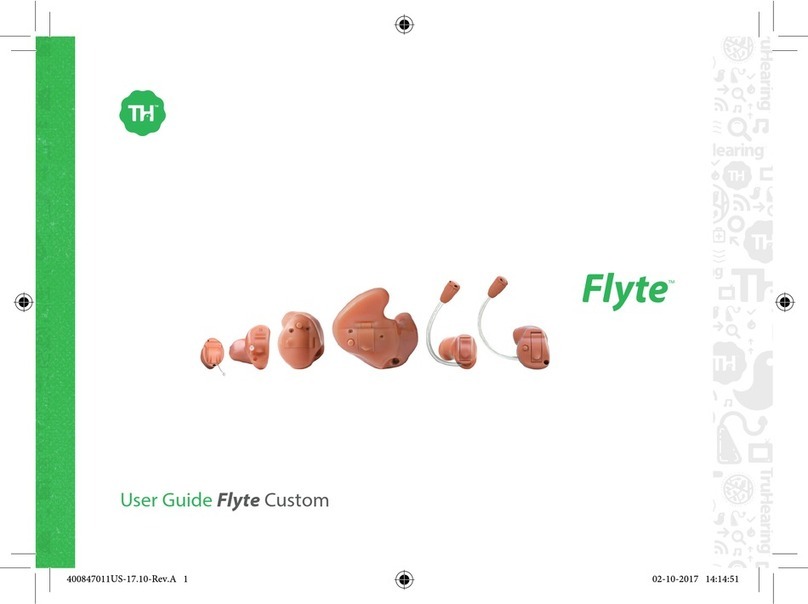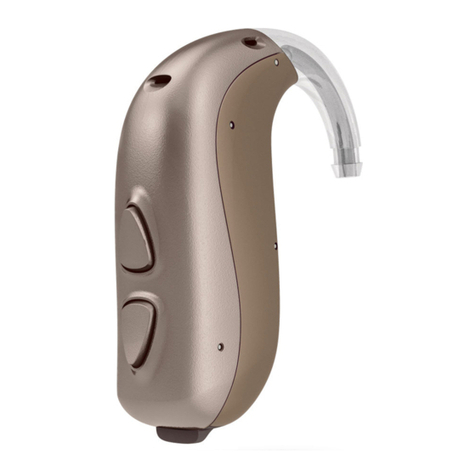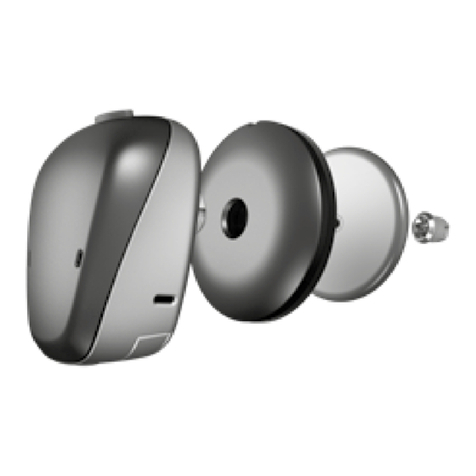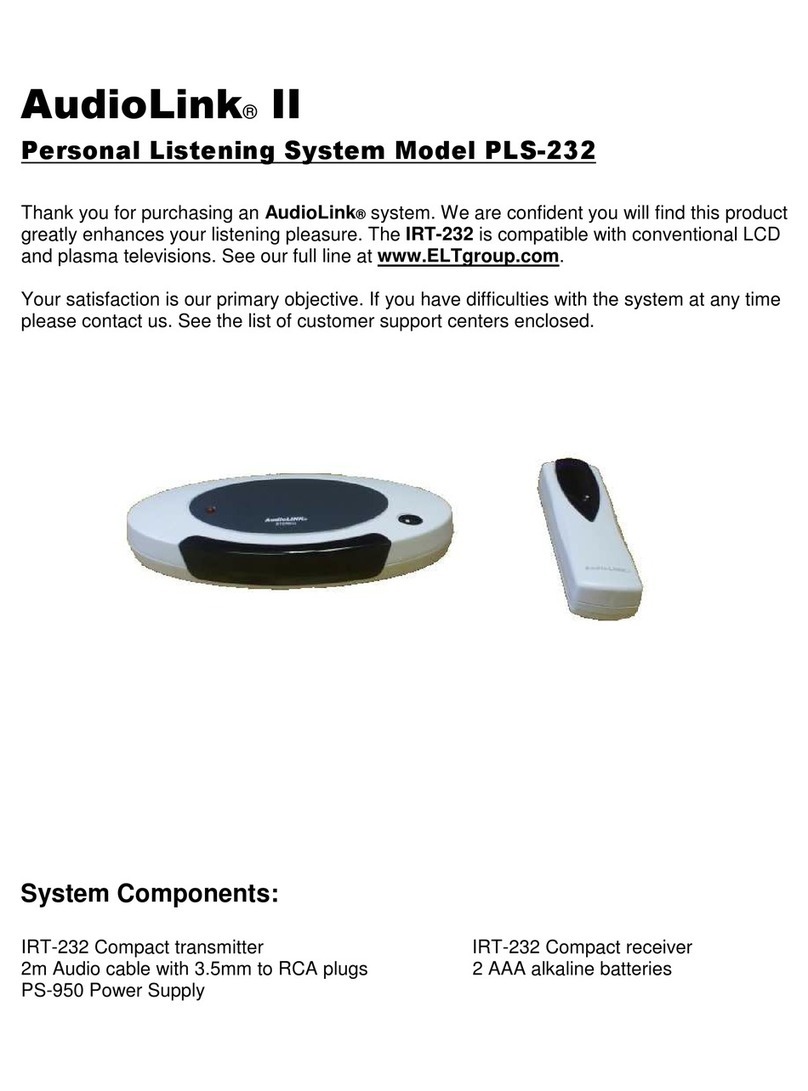GN Hearing ReSound Key User manual

User guide
ReSound Receiver-In-Ear hearing aids

Hearing aid information
Left hearing aid Right hearing aid
Serial number Serial number
Model number Model number
Battery type £312 £13
Dome/
earmould type
Closed dome
£Small
£Medium
£Large
Open dome
£Small
£Medium
£Large
Power dome
£Small
£Medium
£Large
£Tulip dome £RIEearmould
Program Beep Description
1 One beep
2 Two beeps
3 Three beeps
4 Four beeps
2

Table of Contents
Introduction 5
Your hearing aid 6
Preparing your hearing aids for use 9
Placing your hearing aids in your ears 13
Removing your hearing aids from your ears 18
Using your hearing aids 20
Using a telephone 25
Direct Audio Input 30
Advanced options 33
Wireless accessories 38
Cleaning and caring for your hearing aids 40
General warnings and precautions 50
Hearing aid expectations 52
Troubleshooting 53
Warnings to Hearing Aid Dispensers (US only) 56
Tinnitus Management 59
Regulatory information 72
Technical specifications 80
Additional information 84
3

4

Introduction
Thank you for choosing our hearing aids. We recommend that you use your hearing aids every day. This
way you will fully benefit from them.
NOTE: Read this booklet carefully before you start using your hearing aids.
Intended use
Generic air-conduction hearing aids are wearable sound-amplifying devices intended to compensate for
impaired hearing. The fundamental operating principle of hearing aids is to receive, amplify, and transfer
sound to the eardrum of a hearing impaired person.
For devices including a Tinnitus Sound Generator module
The Tinnitus Sound Generator module is a tool to generate sounds to be used in a Tinnitus Management
Program to temporarily relieve patients suffering from Tinnitus.
For devices including a dome
The dome is intended to be connected to a receiver tube on the hearing aid. The dome is intended to
ensure that the sound outlet of the hearing aid is placed in the ear canal.
This accessory is intended to be used by the same age group as the hearing aid. The accessory is intended
to be used by lay persons.
Introduction 5

Your hearing aid
Zinc-Air battery model (62)
1. Receiver wire
2. Receiver
3. Dome (an open dome is shown)
4. Multi-function button
5. Microphone inlets
6. Battery compartment
7. Model and serial number (in the battery compartment)
1
2
3
4
5
67
6Your hearing aid

Zinc-Air battery model (61)
1. Receiver wire
2. Receiver
3. Dome (an open dome is shown)
4. Push button
5. Microphone inlets
6. Battery compartment
7. Model and serial number (in the battery
compartment)
1
3
2
5
6
4
7
Your hearing aid 7

Domes and earmoulds
Tulip dome Closed dome Open dome Power dome Custom earmould
The closed, open and power domes are available in different sizes. Tulip domes are one size.
Domes are all light grey.
Only use domes supplied by ReSound.
8Your hearing aid

Preparing your hearing aids for use
Battery warnings
WARNING: Batteries contain dangerous substances and should be disposed of carefully in the
interest of your safety and for the environment. Please note:
1. Keep batteries away from children, mentally disabled persons, and pets.
2. Do not place batteries in your mouth. Consult a physician immediately if a battery has been
swallowed, as they can be harmful to your health.
3. Do not recharge zinc-air batteries – they may leak or explode.
4. Do not attempt to dispose of batteries by burning them.
5. Used batteries are harmful to the environment. Please dispose of them according to local
regulations or return them to your hearing care professional.
6. Batteries may leak. Remove the battery if you leave the hearing aids unused for longer periods.
7. If the batteries are not inserted correctly, the device will not work and the batteries may build up
heat. If this happens, please remove the batteries.
NOTE:
• Always use new zinc-air batteries that have a minimum remaining shelf life of one year.
• To save battery power, turn off your hearing aids when they are not in use.
Preparing your hearing aids for use 9

Inserting the battery into your hearing aid
1. Open the battery door with
your fingernail. Remove
the old battery (if there is
one).
2. Remove the packaging
and protective foil from the
new battery. Wait for two
minutes while the battery
activates.
3. Insert the new battery, with the plus
(+) sign correctly positioned, into the
battery compartment door. Do not
insert it directly into the hearing aid.
4. Close the battery door.
NOTE:
• To save battery power, turn off your hearing aids when they are not in use.
• At night, turn off the hearing aids. Open the battery door completely to allow moisture to
evaporate and prolong the hearing aids’ lifespan.
10 Preparing your hearing aids for use

Low battery warning
When the batteries are low on power, your hearing aids reduce the volume, and play a melody every
15minutes, until they are empty and turn off.
NOTE: Keep spare batteries on hand.
Low battery warning when paired with wireless accessories
(optional)
NOTE: The batteries drain faster when you use wireless functionalities like streaming from your
smartphone or from your TV via our TV streamer. As the battery power goes down, the wireless
functions stop working. A short melody every five minutes indicates that battery power is too low. The
table below shows how the hearing aid functions are affected as the power level declines.
If the hearing aids are experiencing frequent loss of connection to wireless accessories, contact your
hearing care professional for a list of low impedance batteries.
Preparing your hearing aids for use 11

Battery level Signal Hearing aid Remote control Streaming
Fully charged P P P
Low
4 even tones
P P x
Depleted
3 even tones and
1 longer tone
Px x
These will work again when you insert a new battery.
12 Preparing your hearing aids for use

Placing your hearing aids in your ears
How to tell left from right
If you have two hearing aids, they may be programmed differently. One for your left ear, the other for your
right. Do not swap them. Please pay attention to this when cleaning, storing and inserting the hearing aids.
You might want to ask your hearing care practitioner to mark your hearing aids with a coloured Left and
Right indication: Left is blue and Right is red.
Placing your hearing aids in your ears 13

Inserting the receiver dome into your ear
If your hearing aids have domes, follow these instructions:
1. Hang the hearing aid over
the top of your ear.
2. Hold the receiver wire where
it bends and gently
place/push the receiver dome
into your ear canal.
3. Push the dome far enough
into your ear canal so that the
wire rests against your head.
You can check in a mirror.
NOTE: To avoid whistling, ensure that the wire and dome fit correctly into your ear. If you continue to
experience whistling, check the troubleshooting guide for other possible reasons and solutions.
14 Placing your hearing aids in your ears

CAUTION: Never attempt to modify the shape of the receiver wire yourself.
Sport lock
If you lead an active life, your hearing aids may come loose. To avoid this
situation, your hearing care professional can attach and adjust a sport
lock to the receiver.
To insert a hearing aid with a sport lock:
1. Insert the hearing aid as usual
2. Tuck the sport lock into the bottom part of the indentation above your earlobe.
NOTE: Sport locks may become stiff, brittle or discoloured over time. Contact your hearing care
professional for a replacement.
Placing your hearing aids in your ears 15

Inserting earmoulds into your ears
If your hearing aids have earmoulds, follow these instructions:
1. Hold the earmould
between your thumb and
index finger and position
the sound outlet into your
ear canal.
2. Slide the earmould into your ear
with a gentle, twisting movement.
Move the earmould up and down
and press gently. Opening and
closing your mouth may assist.
3. Place the hearing aid behind
your ear and ensure it is
secure. When properly inser-
ted, your hearing aids should
fit snugly and comfortably.
NOTE: When inserting an earmould, it may help to pull your ear up and outward with the opposite
hand.
16 Placing your hearing aids in your ears

CAUTION: Never attempt to modify the shape of the hearing aids, earmoulds, domes or receiver
wires yourself.
Placing your hearing aids in your ears 17

Removing your hearing aids from your ears
Removing receiver domes from your ears
If your hearing aids have domes, follow these instructions:
1. Lift the hearing aid off your ear. 2. Hold the receiver wire with your thumb and
forefinger where it bends and pull the dome out
of your ear canal.
18 Removing your hearing aids from your ears

Removing earmoulds from your ears
If your hearing aids have earmoulds, follow these instructions:
1. Lift the hearing aid from behind your
ear. Let it hang beside your ear
momentarily.
2. Using your thumb and index finger, gently pull the
earmould (not the hearing aid or the wire) loose from your
ear. If your earmould has a removal cord, pull it gently to
assist. The removal cord is a separate line that is
additionally attached to the earmould if requested.
Remove the earmould completely by twisting it gently.
Removing your hearing aids from your ears 19

Using your hearing aids
Turning your hearing aids on and off
Once you have placed the hearing aids on your ears, you can turn them on.
Your hearing aids always start on program 1 at the pre-set volume.
To turn your hearing aid on, close the battery door. To turn the hearing aid off, open the battery door
(with your fingernail).
Smart Start
Smart Start delays the time before your hearing aid turns on after you close the battery door. With this
function activated, you will hear a beep for each second of the delay period (this is either 5 or 10 seconds).
NOTE: If you do not want to use this function, ask your hearing care professional to deactivate it.
20 Using your hearing aids
Table of contents
Other GN Hearing Hearing Aid manuals
Popular Hearing Aid manuals by other brands
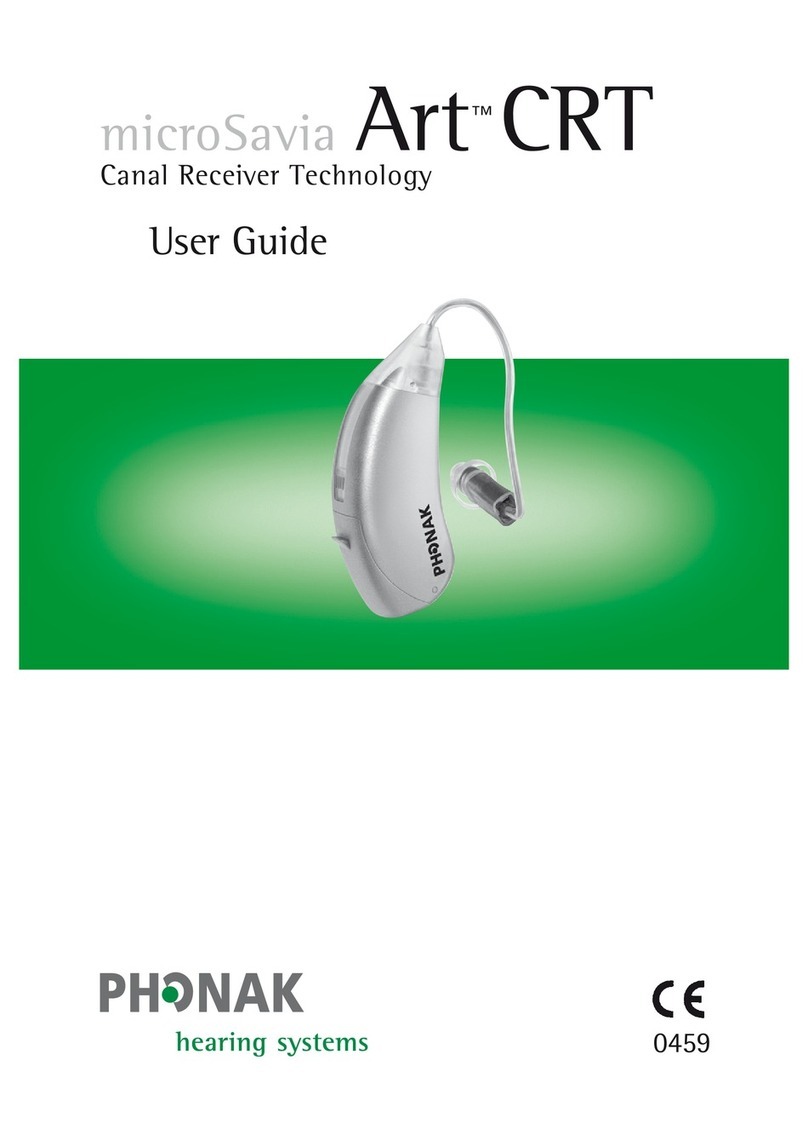
Phonak
Phonak microSavia Art CRT user guide

Phonak
Phonak PicoForte3 Operating lnstructions
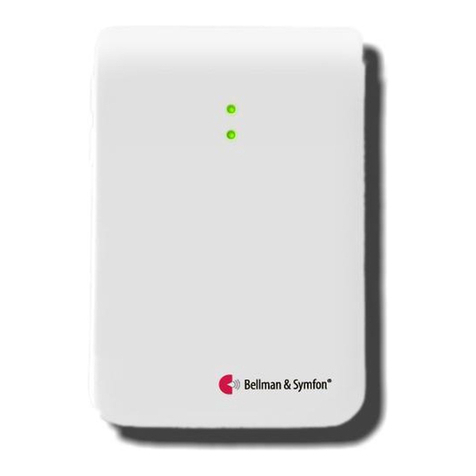
Bellman & Symfon
Bellman & Symfon VISIT BE1432 Medical device information

Hearing Assist
Hearing Assist ReCharge! HA-302 user manual
oticon
oticon miniRITE Alta2 Instructions for use
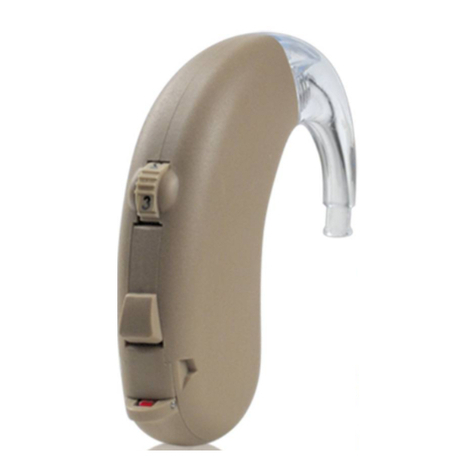
Microson
Microson M34 D Front user manual
oticon
oticon Alta2 Pro Ti Instructions for use
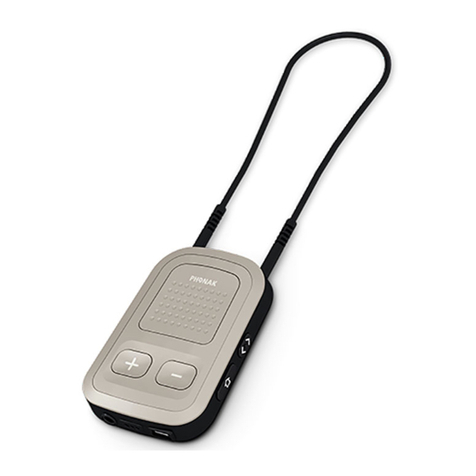
Phonak
Phonak ComPilot user guide
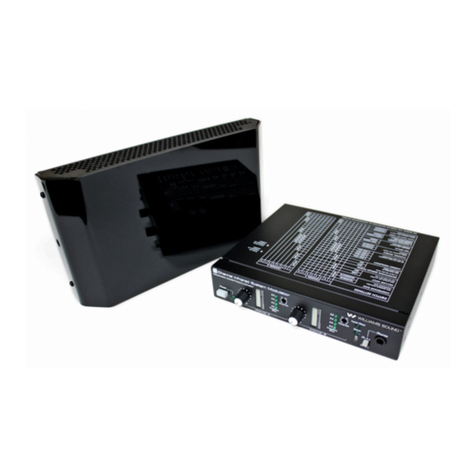
Williams Sound
Williams Sound Sound Plus WIR TX925 Installation guide & user manual

Conversor
Conversor Listenor user guide

Siemens
Siemens Life 500 BTE instruction manual
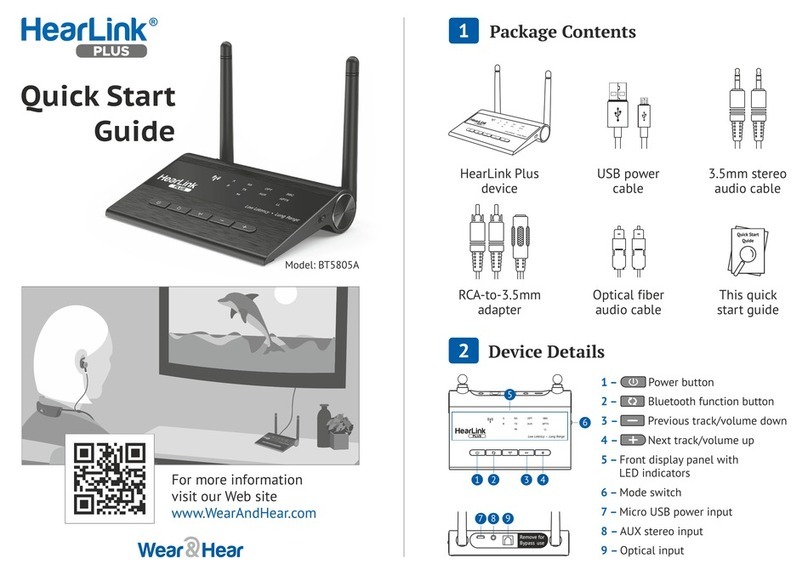
Wear & Hear
Wear & Hear HearLink Plus BT5805A quick start guide
